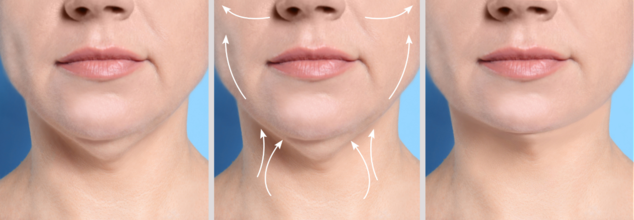
Credits: Canva
These Habits Could Keep Dementia At Bay
From slurping daily spoonfuls of fish oil to giving up alcohol, many Americans are trying a lot of new things to keep their minds sharp. The list of activities go on, including lifting weights, and solving puzzles. These are done all for good reasons; Americans do not want their brains to slow down. The fear is real too, as dementia, especially Alzheimer's disease is on the rise. 6.7 million Americans today live with Alzheimer's and the number is expected to double in every 20 years.
Given these numbers, researchers are now exploring new ways to delay or prevent cognitive decline. While no one strategy guarantees to prevent dementia, there are certain lifestyle habits that could keep it at bay. Here are some:
Train Your Brain With Puzzles And Word Games
Crossword puzzles, Sudoku, Wordle, or strategy-based games — anything that gets your mind moving — could be helpful in keeping your brain agile. Although scientific proof is limited, regular mental stimulation is widely considered beneficial.
“Reading, learning new things, talking to people, just engaging the brain in many different ways is good for your brain,” said Dr. Andrew Newberg, a neuroscientist at Florida Atlantic University's Stiles-Nicholson Brain Institute to a media outlet. The key? Variety. Don’t fall into a mental routine — change it up often to keep your brain on its toes.
Your Sleep Must Be a Priority
Sleep plays an important role in your brain health, it also gives your brain the time it needs to rest, reset, and clean out all or any harmful toxins that build up during the day. Dr Daniel Vela-Duarte, a neuro-interventional surgeon also suggests to keep a consistent sleep schedule. He also suggests to exposure yourself to natural light within the first 30 minutes of waking up. It must be your aim to get at least 15 to 30 minutes of morning sunlight to help regulate your sleep-wake cycle.
Food For Brain
It is not a new concept. There are many different foods that work well for your brain. What you eat matters just as much for your brain as it does for your body. Healthy balanced diet could also reduce inflammation and keep arteries, including the ones that lead to your brain clean and functioning well.
What You Can Do:
- Include more fruits in your diet. You can also include vegetables, nuts, and whole foods.
- Cut down on added sugar and processed items.
- Choose foods which are rich in magnesium and omega-3 fatty acids.
In fact, a 2023 study published in Springer Nature, titled: Dietary magnesium intake is related to larger brain volumes and lower white matter lesions with notable sex differences, found that magnesium-rich foods may lower dementia risk, especially in women. Cold-water fish (like salmon and sardines) rich in omega-3s are also linked to improved thinking skills and better brain function.
Also, experts advise limiting alcohol, as it can interfere with brain structure and performance.
Keep Moving Your Body
Exercise benefits not only your heart and muscles but also your mind. Physical activity boosts chemicals in the brain that promote mental sharpness and helps preserve memory and thinking functions.
Research shows that people who exercise tend to have larger brain regions responsible for thinking and memory. Nicole Baganz of the FAU Stiles-Nicholson Brain Institute emphasizes that any type of movement helps — whether it’s walking, lifting weights, or even chair yoga. The goal? Get moving regularly, even if it’s just a brisk walk around the block.
Stay Socially Connected
Don’t underestimate the power of good company. Social isolation and loneliness are known to negatively affect mental health and speed up cognitive decline. Connecting with others through conversations, activities, or volunteering helps keep the brain engaged.
“Loneliness is one of the worst things that can happen to the brain,” says Baganz. Reconnecting with old hobbies or learning something new — like a language or musical instrument — can also provide mental stimulation and help build new neural pathways.

Credit: Canva
Can Tourette's Syndrome Be Cured?
Neurodivergence is a term that is used when someone's brain processes, learns and/or behaves differently from what is considered "typical." Formarly thought of as a problem, scientists now understand that neurodivergence isn't inherently an issue for the individual and that it has large societal benefits. Notably, while certain neurodivergent disorders like Autism and Parkinson's disease are usually talked about, there are several "less popular" conditions like Tourette's Syndrome.
What Happens To A Person With Tourette's Syndrome?
Tourette syndrome (TS) is a neurological disorder that causes involuntary movements or sounds called tics. Tics can include blinking, shrugging, throat clearing, or blurting out words. As per Mayo clinic, these tics typically show up between ages 2 and 15, with the average being around 6 years of age. Males are about three to four times more likely than females to develop Tourette syndrome.
Can Tourette's Syndrome Be Cured?
As of now, there is no cure or treatment for this condition. What is currently used are the treatments that will control the tics that interfere with everyday activities and functioning. When tics aren't severe, treatment might not be necessary.
However, there are several options if you want to manage this condition:
Medication
Medications that block or lessen dopamine: Fluphenazine, haloperidol (Haldol), risperidone (Risperdal) and pimozide (Orap) can help control tics. Possible side effects include weight gain and involuntary repetitive movements. Tetrabenazine (Xenazine) might be recommended, although it may cause severe depression.
Botulinum (Botox) injections: An injection into the affected muscle might help relieve a simple or vocal tic.
ADHD medications: Stimulants such as methylphenidate (Metadate CD, Ritalin LA, others) and medications containing dextroamphetamine (Adderall XR, Dexedrine, others) can help increase attention and concentration. However, for some people with Tourette syndrome, medications for ADHD can exacerbate tics.
Central adrenergic inhibitors: Medications such as clonidine (Catapres, Kapvay) and guanfacine (Intuniv) — typically prescribed for high blood pressure — might help control behavioral symptoms such as impulse control problems and rage attacks. Side effects may include sleepiness.
Antidepressants: Fluoxetine (Prozac, Sarafem, others) might help control symptoms of sadness, anxiety and OCD.
Antiseizure medications: Recent studies suggest that some people with Tourette syndrome respond to topiramate (Topamax), which is used to treat epilepsy.
Therapies
Behavior therapy: Cognitive Behavioral Interventions for Tics, including habit-reversal training, can help you monitor tics, identify premonitory urges and learn to voluntarily move in a way that's incompatible with the tic.
Psychotherapy: In addition to helping you cope with Tourette syndrome, psychotherapy can help with accompanying problems, such as ADHD, obsessions, depression or anxiety.
Deep brain stimulation (DBS): For severe tics that don't respond to other treatments, DBS might help. DBS involves implanting a battery-operated medical device in the brain to deliver electrical stimulation to targeted areas that control movement. However, this treatment is still in the early research stages and needs more research to determine if it's a safe and effective treatment for Tourette syndrome.

Credits: Canva
What Are Type 3 And Type 4 Diabetes?
While Type 1 and Type 2 diabetes are widely recognized and studied, scientists have proposed two additional forms - type 3 and type 4 diabetes. Though they are not medically or officially classified by any health organizations, these terms have been gaining attention more and more.
Recently, Health and Me reported on the Type 5 diabetes, which is linked to malnutrition. However, the question is, if we already have type 1, 2, and 5 diabetes, then what are the type 3 and 4?
Let's delve a little deeper into that:
What is Type 3 Diabetes?
Type 3 Diabetes is an unofficial term that is used to describe Alzheimer's disease which is caused by insulin resistance in the brain. Researchers first proposed this classification after observing similarities between the brain changes in Alzheimer's and those caused by diabetes.
In healthy brains, insulin usually supports communication between the nerve cells and also helps regulate energy use. However, in people with Alzheimer's, the brain shows signs of insulin resistance, impairing the brain's ability to use glucose properly. This dysfunction can also lead to memory loss, cognitive decline, and the buildup of proteins like tau and beta-amyloid, hallmarks of Alzheimer's disease.
While Type 3 diabetes is not a formally recognized diagnosis, the idea does throw a light on its important link between metabolic health and brain function.
What are the symptoms?
- Memory loss that disrupts daily life
- Difficulty solving problems or planning
- Trouble completing familiar tasks
- Confusion with time or place
- Problems with language and communication
- Losing items or placing them in odd locations
- Poor judgment or decision-making
- Withdrawal from work or social activities
- Mood swings and personality changes
While some of these changes can occur with age, consistent or worsening symptoms should prompt a medical evaluation.
What Causes It?
The idea of type 3 diabetes is based on how insulin dysfunction in the brain may contribute to neurodegeneration. Several risk factors have been identified:
- Diet high in sugar and fat, low in fiber
- Sedentary lifestyle
- Chronic stress
- Low socioeconomic status
- Genetics, including the presence of the APOE4 gene
- High blood pressure and poor lipid metabolism
These factors can impair glucose delivery to the brain and damage neurons, increasing the risk of dementia.
What is Type 4 Diabetes?
It is also another proposed category that occurs in older adults who develop insulin resistance despite not being overweight. In fact, in a 2015 study that involved mice, suggested that this form of diabetes may be caused by accumulation of immune cells called regulatory T cells, which increase with age. The study is titled: Depletion of Fat Tregs Prevents Age-Associated Insulin Resistance.
Unlike type 2 diabetes, which is also linked to obesity, in type 4 diabetes, lean individuals get affected.
Symptoms of Type 4 Diabetes
- Fatigue
- Frequent urination
- Blurred vision
- Unexplained weight loss
- Increased thirst and hunger
- Slow-healing sores
Because it typically affects older adults with normal body weight, these symptoms may be misattributed to aging or other conditions, leading to underdiagnosis.
What Causes It?
The exact causes of type 4 diabetes are still being studied, but aging appears to play a significant role. Research indicates that excess regulatory T cells may interfere with insulin signaling, leading to blood sugar issues in the absence of typical risk factors like obesity.

(Credit-Canva)
You Don't Need Fancy Tools To Reduce Double Chin - Simple Exercise To Tighten Chin Muscles
As we age, or gain weight, the muscles around our neck area become loose. This causes some loose skin to start hanging, making a ‘double chin’. This is a source of frustration and insecurity for many people. They see it as a sign of unhealthiness, overeating etc., while there are many other reasons why you may have developed a double chin. This also pushes many people to opt for expensive tools that claim to help tighten your muscles or try cosmetic surgeries etc.
Many people are looking for ways to achieve a more defined jawline and reduce the appearance of a double chin. While targeting this area with exercise might seem difficult, a doctor has shared a surprisingly simple technique to potentially address this concern. Chiropractor Dr Michael Rowe based in Michigan, who shares self-help exercises, tips and wellness videos on social media platforms like TikTok and Instagram, shared a great tip for double chins. It requires no big deal surgery, or fancy tools, rather just a tennis ball.
Is Having Double Chin A Bad Sign?
A "double chin" is characterized by the accumulation of fat and tissue beneath the chin, creating a noticeable fold or the appearance of a second chin. It's common to carry extra weight in the chin and neck areas, which can alter the face and jawline's overall appearance.
While weight gain is a significant contributor, genetics and body structure can also predispose individuals to developing a double chin. It is a part of natural aging. As we age our natural elasticity decreases because we produce less collagen.
Chiropractor Dr. Michael Rowe has shared a straightforward method on TikTok that may help reduce a double chin. This easy-to-follow technique requires just a single tennis ball and no gym membership or expensive treatments.
How To Reduce Double Chin With Tennis Ball?
Dr. Rowe describes the exercise as "very easy" and claims it helps firm the muscles around the jawline and neck, potentially contouring the area and reducing the double chin. Here's how to do it:
- Place a tennis ball directly underneath your chin.
- Gently press your chin down towards your chest. You should feel the muscles in your neck engage.
- Maintain this comfortable position for five seconds.
- Release the pressure and repeat the exercise 10 to 15 times.
- With each repetition, try to press down slightly more.
- Dr. Rowe recommends performing this exercise two to three times a day.
- If you experience any discomfort, allow for recovery time.
While this specific exercise may target the chin area, Dr. Rowe advises that it should be combined with a proper diet and exercise plan for better and faster results.
Lifestyle and dietary changes that focus on overall weight loss can help diminish a double chin. This includes consuming a balanced diet rich in lean proteins, healthy fats, fruits, vegetables, and whole grains, while minimizing processed foods, sugary drinks, and excessive alcohol. It's always advisable to consult your doctor if you have any concerns about your double chin or overall health.
There are also other exercises like neck stretches, chin tucks etc., that you can try if the tennis ball method does not appeal to you.
© 2024 Bennett, Coleman & Company Limited

